Share this
What Is Automatic Test Equipment (ATE)?
by Brett Daniel on Feb 11, 2021 4:40:51 PM
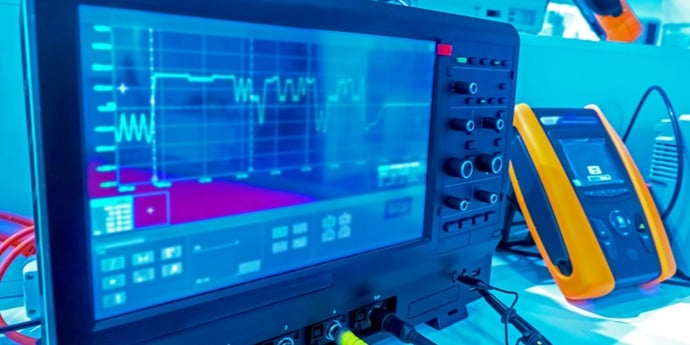
Photo: The automated test equipment (ATE) market is expected to grow by nearly $3 billion by 2027.
Table of Contents
- What is automatic test equipment (ATE)?
- What are the components of an ATE system?
- How is ATE used?
- How is ATE useful and beneficial?
- What industries and companies use ATE?
- Trenton Systems a trusted ATE computer supplier
- Conclusion: Trenton Knows ATE
As of 2019, the global automatic test equipment (ATE) market is worth $6 billion. As more and more equipment becomes equipped with electronics whose performance and functionality to be tested and validated prior to deployment or sale, we expect to see this number increase.
ATE is a useful data acquisition and diagnostic tool for testing a variety of electronics in various industries, including defense and aerospace, automotive, industrial automation, among others.
ATE is directly responsible for ensuring that end users of electronic equipment not only acquire devices that perform and function as intended, but are also not exposed to danger as a result.
In this blog post, we’ll discuss ATE, why it’s useful, the components of an ATE system, how ATE is used, the industries that use ATE, and at the end, if you have just a second, we’d like to talk to you about our experience supporting ATE customers.
Without further ado, let’s jump right in.
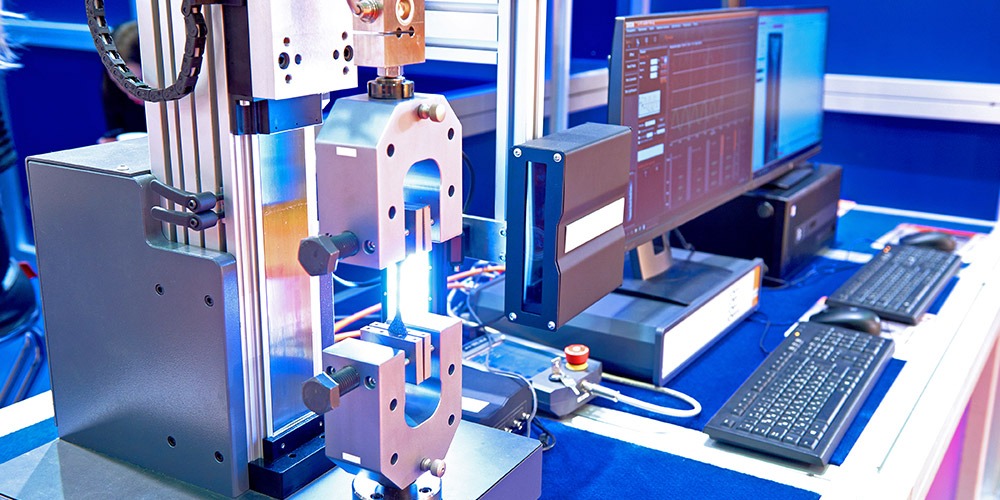
Photo: ATE is used by numerous industries to assess the functionality of electronic devices.
What is automatic test equipment (ATE)?
Automatic test equipment (ATE), or automatic testing equipment, is computerized machinery that uses test instruments to carry out and evaluate the results of functionality, performance, quality, and stress tests performed on electronic devices and systems. As its name implies, ATE automates traditionally manual electronic test equipment and processes, and requires minimal human interaction.
Automatic test equipment is also known as automated test equipment or automated testing equipment. They both use the same ATE acronym. They are just different terms that refer to the same equipment.
The device whose attributes are assessed by the ATE is usually referred to as the device under test (DUT), unit under test (UUT), or equipment under test (EUT).
Many electronic devices in use today are tested by ATE to ensure adequate performance, functionality, and the safety of those who will use, or directly and indirectly benefit from the use of, such devices.
Devices tested by ATE include integrated circuits (ICs), printed circuit boards (PCBs), hard disk drives (HDDs), systems and modules in automobiles, and the various electronic systems and line-replaceable units (LRUs) that support aircraft, spacecraft, and satellites, a family of technologies known as avionics.
What are the components of an ATE system?
A typical automated test solution consists of five main components: hardware, software, test instruments, signal sources, and test probes or handlers.
- Hardware, including standard 19-inch rack mount servers and workstations, power supplies, PCIe backplanes and related PXI modules, interface modules, embedded controllers, analog inputs and outputs, digital input/output, and AC/DC outlets
- Software, for test development and management of data collection, storage, reporting, and analysis
- Test instruments, such as a digital storage oscilloscope (DSO), digital multimeter, or inductance, capacitance, and resistance (LCR) meter
- Signal sources, such as an arbitrary waveform generator (AWG), function generator, pulse generator, or radio frequency (RF) generator
- Test probes or handlers, which establish a connection between a test instrument and a DUT, UUT, or EUT
These components are usually consolidated into all-in-one test stations, which vary greatly in size and portability, from small, compact test stations on wheels, to mammoth, stationary test towers resembling data center server rack cabinets.
Important to note is that not all automated test solutions use the same hardware, software, test instruments, signal sources, and probes or handlers; these configurations vary widely depending on the device being tested by the customer and the parameters requiring measurement.
How is ATE used?
ATE controls, monitors, captures data using, and derives insights from a wide range of test instruments and signal sources, including:
- Digital multimeters, for voltage, current, and resistance measurements
- LCR meters, for inductance, capacitance, and resistance measurements
- Digital storage oscilloscopes (DSOs), for display of signal voltages and analysis of amplitude, distortion, and other characteristics
- Radio frequency (RF) or vector signal generators (VSGs), for RF signal generation
- Arbitrary waveform generators (AWGs), for generation of user-defined electrical waveforms
Here's how an ATE system works in a nutshell:
A high-performance data acquisition (DAQ) computer, sometimes called the master controller, runs special test software, or DAQ software, such as National Instruments' Automated Test Software Suite, that controls and streamlines the test station's instruments and signal sources. The master controller typically has lots of PCIe slots into which any PCIe-based signal or sensor expansion cards are inserted. These cards allow the DAQ of the DUT, UUT, or EUT to take place.
The raw data captured by the test instruments is monitored, analyzed, and stored using the master controller’s signal sources and test software. These readings are then used to determine whether changes to the device need to be made, whether it's ready to head to an integrator or end customer, or whether it’s ready to hit the shelves.
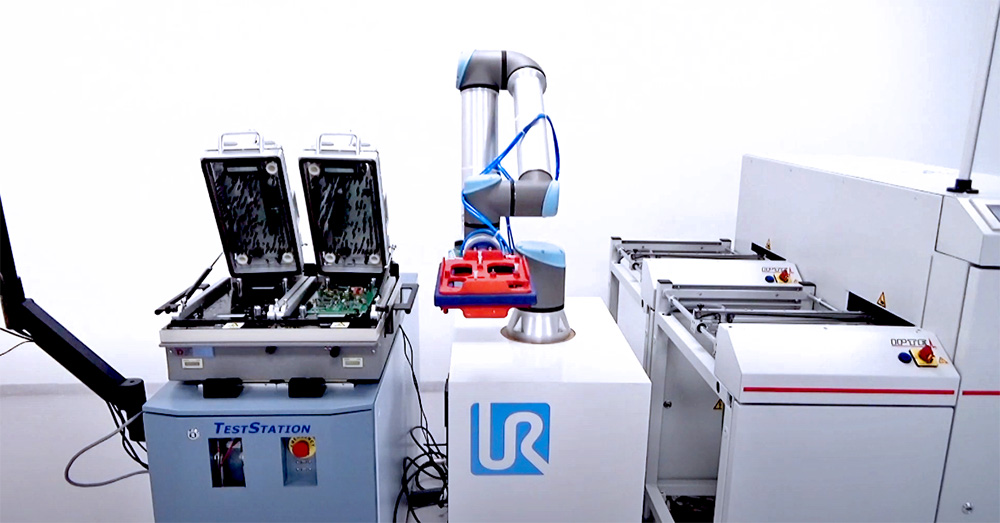
Photo: The main goal of ATE is to ensure that an electronic device works as intended. Credit: Teradyne
How is ATE useful and beneficial?
The overall purpose of ATE systems is to ensure that electronic devices perform and function as intended once they’re in the customer’s hands, which consequently prevents defective or faulty devices from entering the market.
If faults or defects are detected during testing, ATE also helps diagnose why, which allows manufacturers to finetune and make corrections where necessary before their devices are sent to customers.
ATE systems also helps cut down on testing time and saves companies a lot of money by digitizing and automating traditionally manual testing equipment, procedures, and processes.
In fact, there are a host of benefits associated with using ATE, including:
- Reduced test and cycle times: the automation factor ensures test and cycle time consistency by eliminating widely variable troubleshooting on behalf of engineers.
- Reduction or prevention of data input errors: to err is to be human. ATE gets it right every time, assuming there are no technical issues with the equipment.
- More efficient and cost-effective use of available engineering resources: engineers can focus on the occasional testing issue that arises instead of performing the tests manually.
- Faster and more accurate tests: manual testing relies on the speed and skills of the test engineer; therefore, results are only as speedy and quality as the test engineer and his or her skillset.

Photo: The aerospace and defense industries use ATE frequently to verify the functionality and safety of lifesaving, mission-critical devices.
What industries and companies use ATE?
The aerospace and defense industries are big buyers of ATE because of the lifesaving, mission-critical, and safety-critical electronics deployed on military aircraft, ships, ground vehicles, and in weapons, missile launch , radar, and wireless communication systems.
These electronics need to be assessed to a greater extent than electronics in other industries for critical safety and national security purposes. As such, aerospace and defense companies spend a great deal of time and resources on testing and validation prior to deployment.
Pretty much anything from a missile launch system to avionics systems on the latest fighter aircraft is assessed and validated by aerospace and defense companies before fielded by the DoD, reducing the likelihood of a failure to launch or a Mayday situation during a mission.
But aerospace and defense aren't the only industries who make frequent use of ATE. Outside of these two industries, the following industries also use ATE to test their electronics:
- Semiconductor fabrication, where ATE is used to measure output signals of semiconductor devices to validate their functionality
- Automotive and transportation, where ATE is used to assess the functionality of various integrated circuits powering today’s vehicles, including those found in advanced driver-assistance systems (ADAS), infotainment systems, braking units, batteries, active alignment systems, and other components
- Consumer electronics, where ATE is used to assess the functionality of smartphones and tablets, radios, televisions, appliances, speakers, headphones, fitness wearables, and more
- Telecommunications, where ATE is used to test set-top boxes, customer premises equipment (CPE), residential gateways, cable-modem termination systems, optical transponders, among other equipment
- Medical technology, where ATE is used to test numerous medical devices, such as temperature monitors, pacemakers, defibrillators, ventilators and telemetry devices, vision inspection systems, and various surgical devices

ATE Spotlight: National Instruments (NI)
For more than 40 years, NI has developed trusted and reliable automated test and automated measurement systems.
NI's ATE solutions support the semiconductor, aerospace, defense, government, electronics manufacturing, and industrial automation industries, among others.
An expert ATE resource, the company even has an entire video series describing the steps of creating an automated test system.
Check out the first installment here:

Leading automatic test equipment manufacturers and instrument suppliers at the forefront of the automated test equipment market include:
- National Instruments (NI)
- Advantest
- Chroma ATE
- Roos Instruments
- Teradyne
- STAr Technologies
- Xcerra Corporation
Major aerospace and defense companies that use ATE and ATE-related equipment from the companies listed above include:
- Honeywell International
- Northrop Grumman
- Lockheed Martin
- Boeing
- Ball Aerospace & Technologies
- Raytheon Technologies
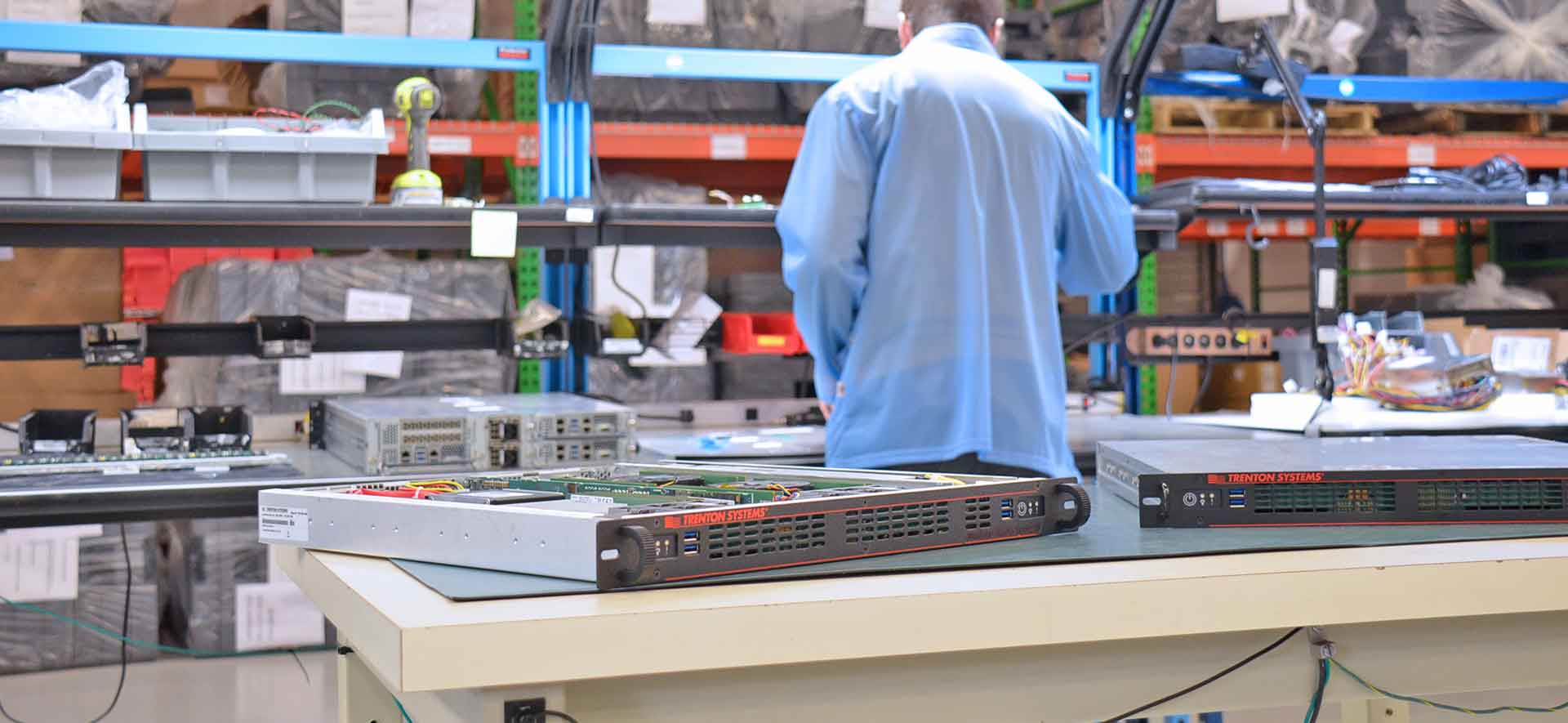
Photo: When shopping for servers and workstations to incorporate into your ATE system, it's important to look for three things: longevity, quality support, and a proven track record.
Trenton Systems a trusted ATE computer supplier
Trenton Systems’ cybersecure, made-in-USA rugged servers and workstations are powering aerospace and defense ATE systems right now, ensuring that mission-critical electronics and equipment are validated and deployment-ready, precious lives are protected, and the country’s defense activities are formidable and robust.
In our more than 31 years of business, we’ve worked with Honeywell International, Raytheon Technologies, Boeing, Northrop Grumman, Lockheed Martin Corporation, and many others to support their ATE testing needs.

We've supplied ATE computers to the SMIC.
Recently, our rugged computers were purchased by the Strategic Missile Integration Complex (SMIC) at Utah’s Hill Air Force Base. The SMIC is the Intercontinental Ballistic Missile (ICBM) System Directorate's test facility for system-level testing and integration and is comprised of fully configured Minuteman launch and launch control facilities outfitted with a plethora of test stations, data storage systems, and test instrumentation. Any modifications to the weapon systems are assessed and validated at this complex prior to being fielded at operational units around the country.
We've supplied ATE computers Honeywell to support JSF.
Our ATE computers are used for aircraft engine testing and validation in support of the Joint Strike Fighter (JSF) tactical aircraft replacement program.
We've supplied ATE computers to Lockheed Martin and Northrop Grumman.
Our ATE computers are used for aircraft testing and validation at Lockheed Martin and drone testing and validation at Northrop Grumman.
We've supplied ATE computers to Ball Aerospace & Technologies.
Ball Aerospace uses Trenton’s ATE computers for satellite testing and validation.
We've supplied ATE computers to Raytheon Technologies.
Raytheon Technologies trusts Trenton’s ATE computers for missile launch system testing and validation.

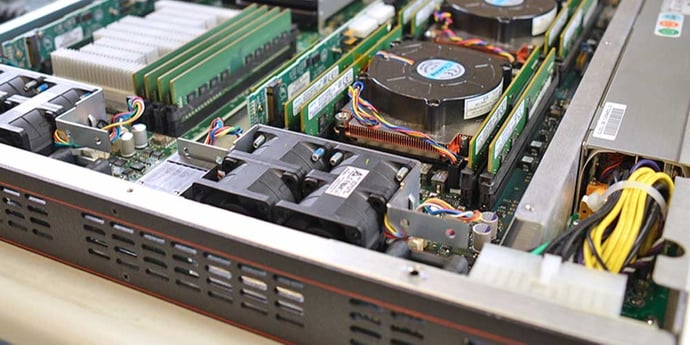
Photo: Trenton computers are tried, tested, and trusted by a diverse group of ATE customers around the world.
Conclusion: Trenton Knows ATE
Our made-in-USA ATE computers are trusted by major aerospace and defense companies everywhere, but we can support any industry that requires durable, reliable, and cybersecure ATE computers.
Our ATE customers tell us that computer longevity is a major pain point. They tell us that they don’t want to spend additional time, money, and engineering resources on ATE replacements and updates because of cheap, unreliable, insecure, and short-lived computers. They also value BIOS control and customization, which we provide in-house, and lots of PCIe slots, which has been our signature for years.
Regarding longevity, security, and reliability, Trenton Systems has an 11-year-plus computer life cycle, partners with leading cybersecurity companies who address both hardware and software security, and has a proven track record of putting long-life, expertly engineered ATE computers into customers’ hands.
We even have an in-house account manager, Jeremy Lee, who has become our ATE customers’ go-to resource for our made-in-USA ATE solutions.
Lee is actually the creator of the “Jeremy Special,” which has become the perfect default testing solution for our ATE customers. It consists of a TKL8255 processor board with a PICMG 1.3 PCIe backplane and PCIe expansion chassis.
Jeremy, and our other wonderful account managers, are on standby to assist you with your ATE application.
Share this
- High-performance computers (42)
- Military computers (38)
- Rugged computers (32)
- Cybersecurity (25)
- Industrial computers (25)
- Military servers (24)
- MIL-SPEC (20)
- Rugged servers (19)
- Press Release (17)
- Industrial servers (16)
- MIL-STD-810 (16)
- 5G Technology (14)
- Intel (13)
- Rack mount servers (12)
- processing (12)
- Computer hardware (11)
- Edge computing (11)
- Rugged workstations (11)
- Made in USA (10)
- Partnerships (9)
- Rugged computing (9)
- Sales, Marketing, and Business Development (9)
- Trenton Systems (9)
- networking (9)
- Peripheral Component Interconnect Express (PCIe) (7)
- Encryption (6)
- Federal Information Processing Standards (FIPS) (6)
- GPUs (6)
- IPU (6)
- Joint All-Domain Command and Control (JADC2) (6)
- Server motherboards (6)
- artificial intelligence (6)
- Computer stress tests (5)
- Cross domain solutions (5)
- Mission-critical servers (5)
- Rugged mini PCs (5)
- AI (4)
- BIOS (4)
- CPU (4)
- Defense (4)
- Military primes (4)
- Mission-critical systems (4)
- Platform Firmware Resilience (PFR) (4)
- Rugged blade servers (4)
- containerization (4)
- data protection (4)
- virtualization (4)
- Counterfeit electronic parts (3)
- DO-160 (3)
- Edge servers (3)
- Firmware (3)
- HPC (3)
- Just a Bunch of Disks (JBOD) (3)
- Leadership (3)
- Navy (3)
- O-RAN (3)
- RAID (3)
- RAM (3)
- Revision control (3)
- Ruggedization (3)
- SATCOM (3)
- Storage servers (3)
- Supply chain (3)
- Tactical Advanced Computer (TAC) (3)
- Wide-temp computers (3)
- computers made in the USA (3)
- data transfer (3)
- deep learning (3)
- embedded computers (3)
- embedded systems (3)
- firmware security (3)
- machine learning (3)
- Automatic test equipment (ATE) (2)
- C6ISR (2)
- COTS (2)
- COVID-19 (2)
- CPUs (2)
- Compliance (2)
- Compute Express Link (CXL) (2)
- Computer networking (2)
- Controlled Unclassified Information (CUI) (2)
- DDR (2)
- DDR4 (2)
- DPU (2)
- Dual CPU motherboards (2)
- EW (2)
- I/O (2)
- Military standards (2)
- NVIDIA (2)
- NVMe SSDs (2)
- PCIe (2)
- PCIe 4.0 (2)
- PCIe 5.0 (2)
- RAN (2)
- SIGINT (2)
- SWaP-C (2)
- Software Guard Extensions (SGX) (2)
- Submarines (2)
- Supply chain security (2)
- TAA compliance (2)
- airborne (2)
- as9100d (2)
- chassis (2)
- data diode (2)
- end-to-end solution (2)
- hardware security (2)
- hardware virtualization (2)
- integrated combat system (2)
- manufacturing reps (2)
- memory (2)
- mission computers (2)
- private 5G (2)
- protection (2)
- secure by design (2)
- small form factor (2)
- software security (2)
- vRAN (2)
- zero trust (2)
- zero trust architecture (2)
- 3U BAM Server (1)
- 4G (1)
- 4U (1)
- 5G Frequencies (1)
- 5G Frequency Bands (1)
- AI/ML/DL (1)
- Access CDS (1)
- Aegis Combat System (1)
- Armed Forces (1)
- Asymmetric encryption (1)
- C-RAN (1)
- COMINT (1)
- Cloud-based CDS (1)
- Coast Guard (1)
- Compliance testing (1)
- Computer life cycle (1)
- Containers (1)
- D-RAN (1)
- DART (1)
- DDR5 (1)
- DMEA (1)
- Data Center Modular Hardware System (DC-MHS) (1)
- Data Plane Development Kit (DPDK) (1)
- Defense Advanced Research Projects (DARP) (1)
- ELINT (1)
- EMI (1)
- EO/IR (1)
- Electromagnetic Interference (1)
- Electronic Warfare (EW) (1)
- FIPS 140-2 (1)
- FIPS 140-3 (1)
- Field Programmable Gate Array (FPGA) (1)
- Ground Control Stations (GCS) (1)
- Hardware-based CDS (1)
- Hybrid CDS (1)
- IES.5G (1)
- ION Mini PC (1)
- IP Ratings (1)
- IPMI (1)
- Industrial Internet of Things (IIoT) (1)
- Industry news (1)
- Integrated Base Defense (IBD) (1)
- LAN ports (1)
- LTE (1)
- Life cycle management (1)
- Lockheed Martin (1)
- MIL-S-901 (1)
- MIL-STD-167-1 (1)
- MIL-STD-461 (1)
- MIL-STD-464 (1)
- MOSA (1)
- Multi-Access Edge Computing (1)
- NASA (1)
- NIC (1)
- NIC Card (1)
- NVMe (1)
- O-RAN compliant (1)
- Oil and Gas (1)
- Open Compute Project (OCP) (1)
- OpenRAN (1)
- P4 (1)
- PCIe card (1)
- PCIe lane (1)
- PCIe slot (1)
- Precision timestamping (1)
- Product life cycle (1)
- ROM (1)
- Raytheon (1)
- Remotely piloted aircraft (RPA) (1)
- Rugged computing glossary (1)
- SEDs (1)
- SIM Card (1)
- Secure boot (1)
- Sensor Open Systems Architecture (SOSA) (1)
- Small form-factor pluggable (SFP) (1)
- Smart Edge (1)
- Smart NIC (1)
- SmartNIC (1)
- Software-based CDS (1)
- Symmetric encryption (1)
- System hardening (1)
- System hardening best practices (1)
- TME (1)
- Tech Partners (1)
- Total Memory Encryption (TME) (1)
- Transfer CDS (1)
- USB ports (1)
- VMEbus International Trade Association (VITA) (1)
- Vertical Lift Consortium (VLC) (1)
- Virtual machines (1)
- What are embedded systems? (1)
- Wired access backhaul (1)
- Wireless access backhaul (1)
- accredidation (1)
- aerospace (1)
- air gaps (1)
- airborne computers (1)
- asteroid (1)
- authentication (1)
- autonomous (1)
- certification (1)
- cognitive software-defined radios (CDRS) (1)
- command and control (C2) (1)
- communications (1)
- cores (1)
- custom (1)
- customer service (1)
- customer support (1)
- data linking (1)
- data recording (1)
- ethernet (1)
- full disk encryption (1)
- hardware monitoring (1)
- heat sink (1)
- hypervisor (1)
- in-house technical support (1)
- input (1)
- integrated edge solution (1)
- international business (1)
- licensed spectrum (1)
- liquid cooling (1)
- mCOTS (1)
- microelectronics (1)
- missile defense (1)
- mixed criticality (1)
- moving (1)
- multi-factor authentication (1)
- network slicing (1)
- neural networks (1)
- new headquarters (1)
- next generation interceptor (1)
- non-volatile memory (1)
- operating system (1)
- output (1)
- outsourced technical support (1)
- post-boot (1)
- pre-boot (1)
- private networks (1)
- public networks (1)
- radio access network (RAN) (1)
- reconnaissance (1)
- rugged memory (1)
- secure flash (1)
- security (1)
- self-encrypting drives (SEDs) (1)
- sff (1)
- software (1)
- software-defined radios (SDRs) (1)
- speeds and feeds (1)
- standalone (1)
- storage (1)
- systems (1)
- tactical wide area networks (1)
- technical support (1)
- technology (1)
- third-party motherboards (1)
- troposcatter communication (1)
- unlicensed spectrum (1)
- volatile memory (1)
- vpx (1)
- zero trust network (1)
- January 2025 (1)
- November 2024 (1)
- October 2024 (1)
- August 2024 (1)
- July 2024 (1)
- May 2024 (1)
- April 2024 (3)
- February 2024 (1)
- November 2023 (1)
- October 2023 (1)
- July 2023 (1)
- June 2023 (3)
- May 2023 (7)
- April 2023 (5)
- March 2023 (7)
- December 2022 (2)
- November 2022 (6)
- October 2022 (7)
- September 2022 (8)
- August 2022 (3)
- July 2022 (4)
- June 2022 (13)
- May 2022 (10)
- April 2022 (4)
- March 2022 (11)
- February 2022 (4)
- January 2022 (4)
- December 2021 (1)
- November 2021 (4)
- September 2021 (2)
- August 2021 (1)
- July 2021 (2)
- June 2021 (3)
- May 2021 (4)
- April 2021 (3)
- March 2021 (3)
- February 2021 (8)
- January 2021 (4)
- December 2020 (5)
- November 2020 (5)
- October 2020 (4)
- September 2020 (4)
- August 2020 (6)
- July 2020 (9)
- June 2020 (11)
- May 2020 (13)
- April 2020 (8)
- February 2020 (1)
- January 2020 (1)
- October 2019 (1)
- August 2019 (2)
- July 2019 (2)
- March 2019 (1)
- January 2019 (2)
- December 2018 (1)
- November 2018 (2)
- October 2018 (5)
- September 2018 (3)
- July 2018 (1)
- April 2018 (2)
- March 2018 (1)
- February 2018 (9)
- January 2018 (27)
- December 2017 (1)
- November 2017 (2)
- October 2017 (3)
/Trenton%20Systems%20Circular%20Logo-3.png?width=50&height=50&name=Trenton%20Systems%20Circular%20Logo-3.png)

Comments (6)